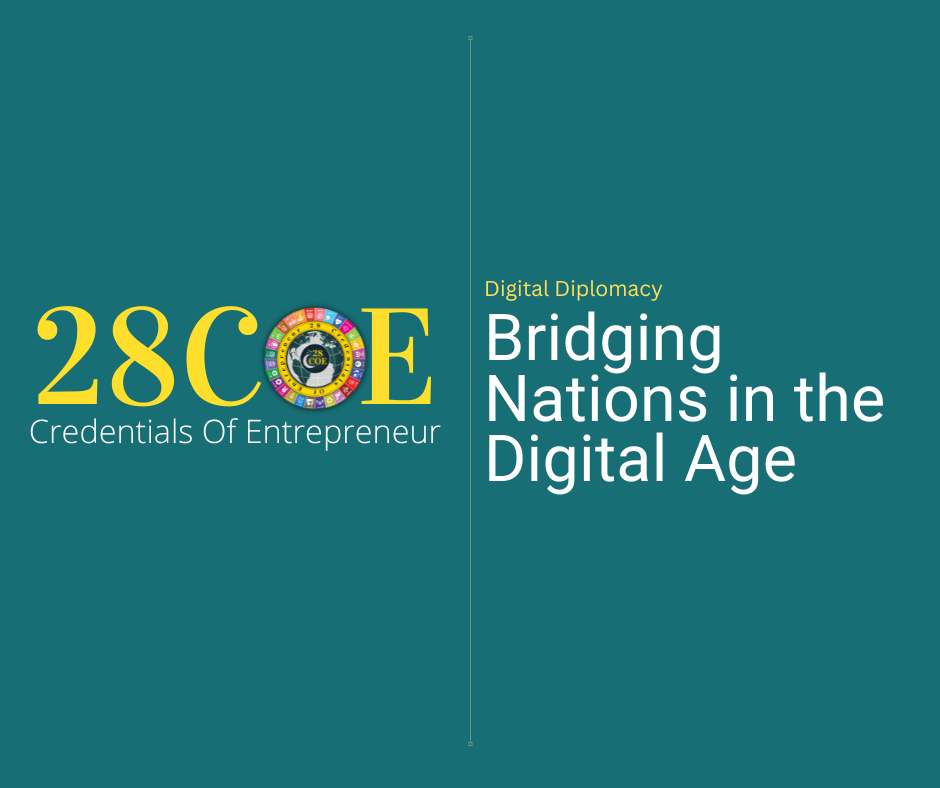In the ever-evolving landscape of international relations, the role of ambassadors has transcended traditional diplomatic methods. Today, ambassadors are not just emissaries who interact with foreign governments; they are also social media-savvy communicators who utilize technology to engage with the public and advance diplomatic goals. This phenomenon is commonly referred to as “Digital Diplomacy.” In this blog, we will delve into the fascinating world of Digital Diplomacy and explore how ambassadors are harnessing the power of social media and technology to bridge gaps and foster international cooperation.
The Digital Diplomacy Evolution
Digital Diplomacy has emerged as a powerful tool for diplomats worldwide. It involves leveraging digital channels, such as social media, to engage directly with foreign populations and communicate diplomatic messages. Ambassadors are no longer confined to stuffy meetings and official statements; they are now active participants in online conversations, wielding the potential to shape global perceptions.
Social Media as the Ambassador’s Megaphone
Social media platforms like Twitter, Facebook, Instagram, and LinkedIn have become indispensable tools for ambassadors to amplify their voices. Ambassadors use these platforms to:
- Share Insights and Updates: Ambassadors share real-time updates about diplomatic missions, trade agreements, cultural exchanges, and policy developments, offering citizens a glimpse into the world of international relations.
- Crisis Communication: During times of crisis, social media provides a direct channel for ambassadors to reassure and inform both their citizens and the international community. Whether it’s a natural disaster or a geopolitical event, immediate communication is vital.
- Public Diplomacy: Ambassadors engage in “public diplomacy” by sharing cultural exchanges, educational programs, and other initiatives that promote their country’s culture and values. This fosters goodwill and cultural understanding.
- Digital Town Halls: Ambassadors often conduct virtual town halls or Q&A sessions, allowing the public to pose questions directly and engage in dialogue, thus increasing transparency and accessibility.
Challenges and Considerations
While Digital Diplomacy offers immense opportunities, it also presents challenges. Miscommunication or misinterpretation of messages can lead to diplomatic incidents. Furthermore, ensuring the security of online communications is paramount.
The Future of Digital Diplomacy
As technology continues to evolve, the future of Digital Diplomacy holds even greater promise. Virtual reality, artificial intelligence, and data analytics will likely play significant roles in enhancing diplomats’ abilities to understand public sentiment, predict crises, and tailor their messages.
In conclusion, Digital Diplomacy has redefined the way ambassadors engage with the public and advance diplomatic goals. It’s a potent tool for breaking down barriers, fostering understanding, and building bridges between nations. As the world becomes increasingly connected through technology, the role of ambassadors as digital communicators will continue to expand, shaping the future of international relations in the digital age.


Blessing!
Pingback: 28COE- Cultural Ambassadors Bridging Cultures Through Art and Diplomacy - 28COE